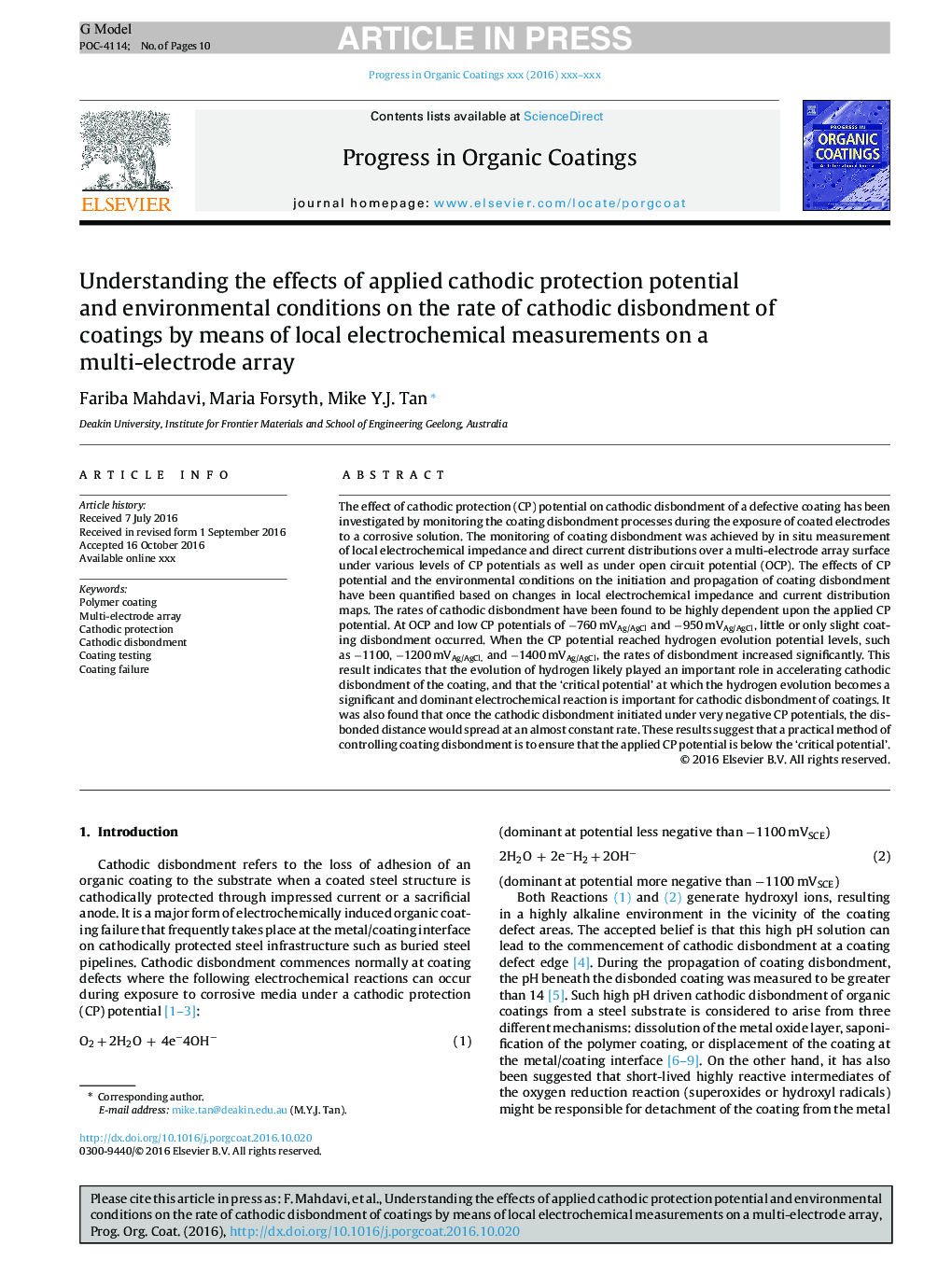| Article ID | Journal | Published Year | Pages | File Type |
|---|---|---|---|---|
| 4999397 | Progress in Organic Coatings | 2017 | 10 Pages |
Abstract
The effect of cathodic protection (CP) potential on cathodic disbondment of a defective coating has been investigated by monitoring the coating disbondment processes during the exposure of coated electrodes to a corrosive solution. The monitoring of coating disbondment was achieved by in situ measurement of local electrochemical impedance and direct current distributions over a multi-electrode array surface under various levels of CP potentials as well as under open circuit potential (OCP). The effects of CP potential and the environmental conditions on the initiation and propagation of coating disbondment have been quantified based on changes in local electrochemical impedance and current distribution maps. The rates of cathodic disbondment have been found to be highly dependent upon the applied CP potential. At OCP and low CP potentials of â760Â mVAg/AgCl and â950Â mVAg/AgCl, little or only slight coating disbondment occurred. When the CP potential reached hydrogen evolution potential levels, such as â1100, â1200Â mVAg/AgCl, and â1400Â mVAg/AgCl, the rates of disbondment increased significantly. This result indicates that the evolution of hydrogen likely played an important role in accelerating cathodic disbondment of the coating, and that the 'critical potential' at which the hydrogen evolution becomes a significant and dominant electrochemical reaction is important for cathodic disbondment of coatings. It was also found that once the cathodic disbondment initiated under very negative CP potentials, the disbonded distance would spread at an almost constant rate. These results suggest that a practical method of controlling coating disbondment is to ensure that the applied CP potential is below the 'critical potential'.
Related Topics
Physical Sciences and Engineering
Chemical Engineering
Process Chemistry and Technology
Authors
Fariba Mahdavi, Maria Forsyth, Mike Y.J. Tan,
